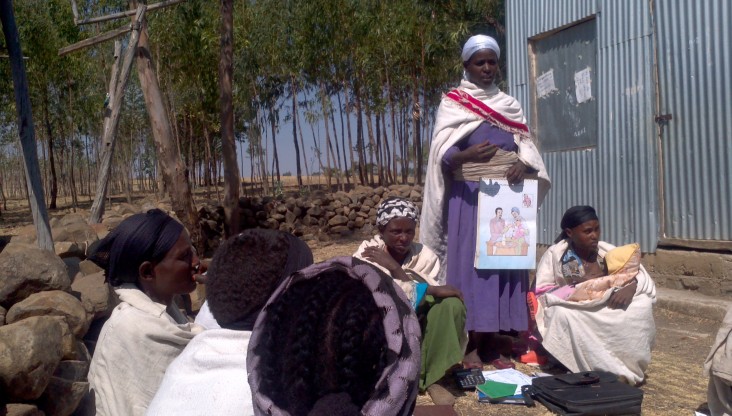
In Ethiopia, it is common for children to go to sleep hungry. Food insecurity is high among rural areas, and over 20 percent of children under 5 suffer from chronic malnutrition.
Agrei Admasu is a 32-year-old mother of three from the Amhara region who struggled to feed her children. “I did not know anything about exclusive breastfeeding or balanced, nutritious food preparation. I used to feed my babies anything that was available at home. However, they frequently suffered from diarrhea and vomiting,” she said.
Admasu delivered her first two children at home without receiving any education on proper maternal and child health and nutrition practices. Like Admasu, many mothers in Ethiopia often lack the knowledge or financial resources to feed their children, which can result in irreversible damage to a child’s physical well-being and mental development.
USAID and Food for the Hungry have partnered to carry out a food assistance program to reduce food insecurity and improve nutrition. By spreading messages on maternal health and child nutrition through Care Groups—groups that promote shared learning among mothers—the program reached over 30,000 pregnant and lactating mothers of children under 2 in 2013 and spurred lasting behavior changes that will benefit the health of both the women and their children.
Historically, pregnant mothers in the target districts were hesitant to announce their pregnancy due to cultural barriers. However, the training helped women begin to understand the numerous health benefits of openly reporting their pregnancy at an early stage. Anecdotal evidence suggests these women affected regional norms and encouraged other women not engaged in the program to break the cultural barriers of hiding pregnancy.
Even though Admasu delivered her first two children at home, she gave birth to her third child at a health post with the help of a trained nurse. She practiced what she has learned from her group discussions: “I only breastfed for the first six months and then prepared balanced, nutritious meals after she turned 6 months old.”
“After [Food for the Hungry] registered us, we formed a group of 13 members. Our group meets regularly and discusses various topics like how to prepare nutritious food for our newly born babies, exclusive breastfeeding, the benefit of saving, personal hygiene and sanitation, and balanced diet,” Admasu explained.
At the end of 2013, the participating class of mothers completed an entire set of training and successfully graduated from the program. As a result, the percentage of children exclusively breastfed in the first six months, among the women participants, increased from 66 percent to 90 percent since the program began in 2011.
After voluntary community health workers helped get the program started, members of the Women’s Development Army, a group of community-led volunteers trained by health workers to focus on spurring local behavior change, became the key grassroots-level agents who continued facilitating training sessions with over 2,400 mother groups. While pregnant and lactating women and their respective children are the direct beneficiaries of the program, over 26,000 male partners and grandparents were also reached with lessons that call for their support in the household.
Three years later, Admasu boasted about her daughter’s health; “My daughter Atsede doesn’t have any serious health issues. Whenever she gets fevers or any other symptoms, I take her to the health post for examination. Now she is about 3 years old but she looks physically bigger and stronger for her age.”
By disseminating education to women through Care Groups, the program is empowering women to make simple daily changes that will provide lasting benefits for the health and well-being of themselves and their children. USAID and Food for the Hungry are partnering to alleviate the chronic food insecurity of over 280,000 beneficiaries through multi-sectoral interventions being implemented in a five-year development food assistance program.







Comment
Make a general inquiry or suggest an improvement.